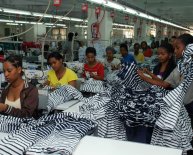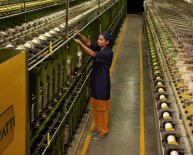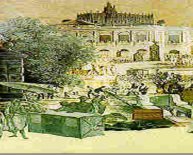
Processes of Textile manufacturing
During dyeing and printing both hazardous chemicals and dyestuffs are used. Dyes used for dyeing, can also be used for printing, but must then undergo the same fixation and washings steps as after the dyeing process. The most common way to print a fabric in full width is to use pigment prints, where the pigments stick to a surface using polymeric resin or a binder. No washing processes are needed. For garment printing, plastisol printing is very common. The PVC-based paste often contains hazardous chemicals, such as phthalates, but there are also alternatives based on acrylate or polyurethane.
Dyeing can take place in several steps when processing the textile. It can be done when spinning the synthetic or man-made fibres, as loose natural or regenerated fibers and in the form of yarns or fabrics. Garment dyeing is also common.
For fiber blends, two types of dyed fibres can be spunned together e.g. viscose and wool.
Full-width printing is carried out on pre-treated fabrics, but it is also possible to put a print on a garment or manufactured textile product by screen or transfer printing. Digital printing is another method.
There are other printing techniques as discharge and resist print using dyes and chemicals. This includes washing to get rid of surplus dyes and residues.
- Printing

















